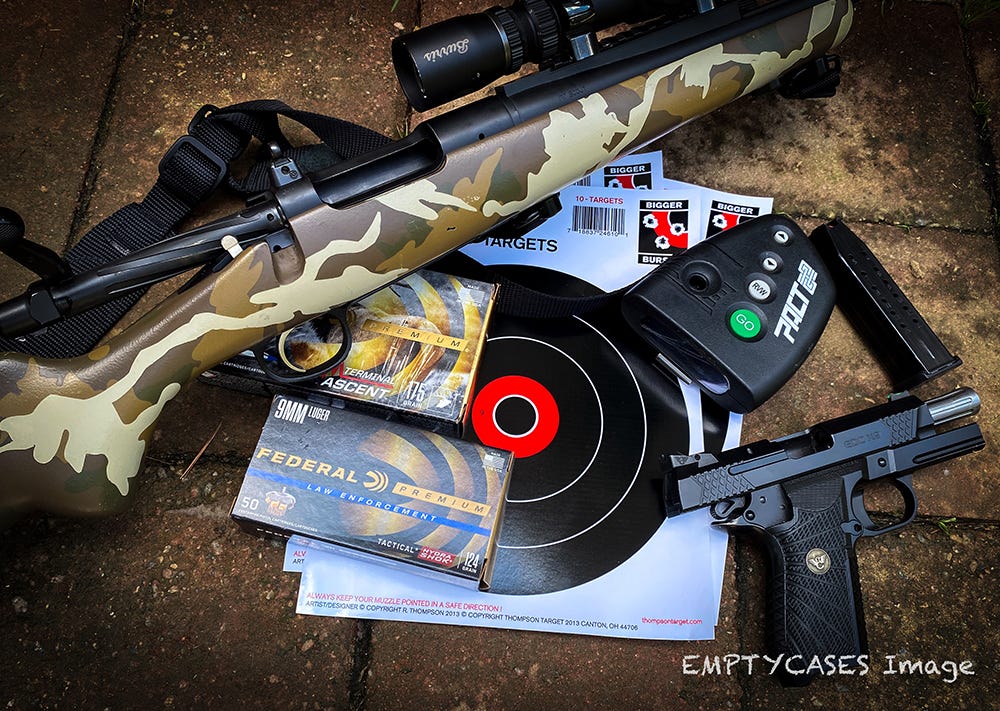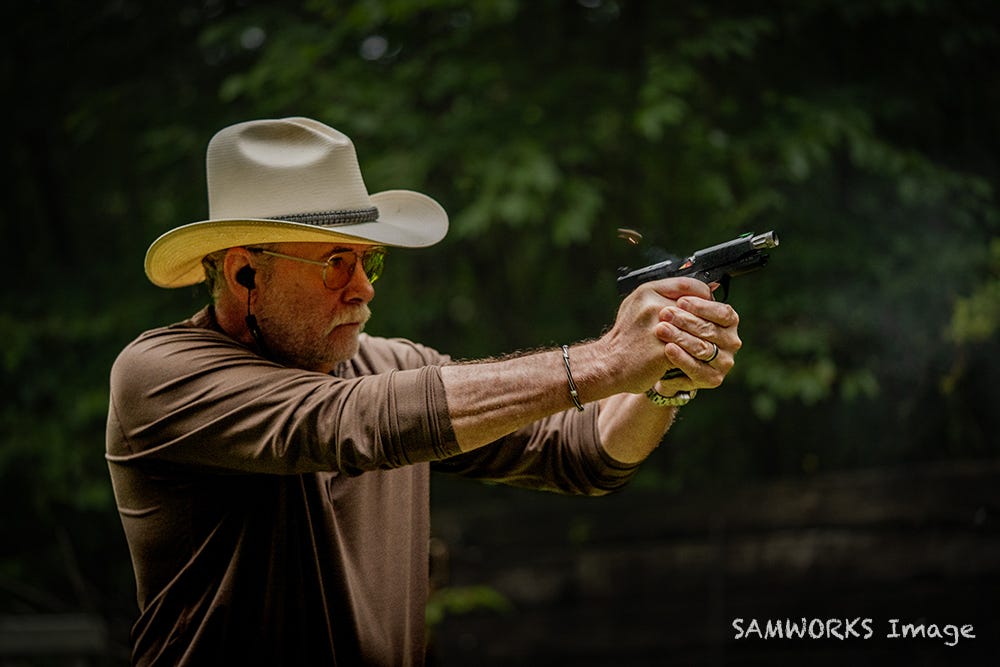I’ve been at this shooting thing for a long, long time, and over the years I’ve wondered how good I was at it. This led me to enter some shooting competitions and I’ve won some, did well in others, and got embarrassed in a few. Competition is one thing, but I’ve always felt that being able to conduct some sort of test – on your own –that could provide you with a reasonable assumption of your skill level would be a good thing. Law enforcement and military organizations routinely do this, and they call the process – which varies greatly – qualification. Wouldn’t it be nice if handgun and rifle shooters had a simple and standardized qualification routine, they could use to establish their proficiency level.
As I said, I’ve been at this a long time and after years of trying to establish a standardized test – if you will – I think I might have finally found it. The makeup of both of these tests is based on what I’ve learned watching others shoot, teaching others to shoot, shooting in real world situations, and by investigating the skills necessary to be a successful handgun and rifle shooter in practical situations
Handgun Test
This is a very simple test to conduct, and it only requires 10 shots. You’ll need a holster for your handgun, a shot timer, and an eight-inch target. On my home range I routinely use an eight-inch steel plate but the Thompson Target HALO Bullseye 8-inch target (product number #R4610) is perfect. The test has five segments, the starting position is standing with your hands resting normally at your side and it proceeds as follows.
Segment 1: From 5 yards, draw your handgun and shoot twice at the target. Use a shot timer as the go signal and record the total time.
Segment 2: From 10 yards, draw your handgun and shoot twice at the target. Use a shot timer as the go signal and record the total time.
Segment 3: From 15 yards, draw your handgun and shoot twice at the target. Use a shot timer as the go signal and record the total time.
Segment 4: From 20 yards, draw your handgun and shoot twice at the target. Use a shot timer as the go signal and record the total time.
Segment 5: From 25 yards, draw your handgun and shoot twice at the target. Use a shot timer as the go signal and record the total time.
In addition to these five segments, you must also conduct a speed reload between shot number 1 and shot number 2 during one – and only one – of the segments. To qualify, you must get all 10 hits and when you add up the five times for the five segments, your total time must be less than 30 seconds. A qualifying score means you’re likely in the top 25% of shooters. If you can shoot the drill clean in less than 20 seconds you can consider yourself a next level shooter and probably in the top 10% to 15%
Rifle Test
This is also a very simple test to conduct, and it only requires 5 shots. You’ll need a strap/sling for your rifle, a shot timer, and an eight-inch target. An eight-inch steel plate works well for the 75 and 100 yard shots, but for the 25 and 50 yard shots the Thompson Target HALO Bullseye 8-inch target is once again ideal. You can use the Thompson Target for all 5 shots if you like. This test has four segments and proceeds as follows.
Segment 1: From 25 yards, start standing with the rifle’s butt on your belt. Use a shot timer and on the go signal fire two shots at the target and record the time.
Segment 2: From 50 yards, start standing with the rifle slung on either shoulder or via a single point strap and the start position is with your hands normally at your side. Use a shot timer and on the go signal fire one shot at the target and record the time.
Segment 3: From 75 yards, start standing with the rifle slung on either shoulder or via a single point strap and the start position is with your hands normally at your side. Use a shot timer and on the go signal fire one shot at the target and record the time.
Segment 4: From 100 yards, start standing with the rifle slung on either shoulder or via a single point strap and the start position is with your hands normally at your side. Use a shot timer and on the go signal fire one shot at the target and record the time.
Additionally, Segment 1 must be fired from the standing position. Segments 2, 3, and 4, can be fired from any position, but you may only fire a maximum of one shot from prone position, and a maximum of two shots from the seated position. (For example, you could fire the first two shots from standing, the third shot from kneeling, the fourth shot from seated, and the fifth shot from prone. You could also fire all five shots from the standing position.) A qualifying score means you’re very likely in the top 25% of shooters, and to achieve it you must get all five hits in less than 30 seconds. If you can get your 5 hits in less than 25 seconds, consider yourself a next level shooter and you’re probably in the top 10% to 15%.
The Struggle
From what I’ve seen, with the handgun test most will struggle to get both hits at 20 and 25 yards. This is partly because few shooters practice with a handgun at that distance, and partly because most shooters will shoot too fast. The ease and speed at which you can get the hits between 5 and 15 yards, carries over to your attempts at 20 and 25 yards where slight sight misalignments and trigger jerks cannot be tolerated. A smooth and fast draw is critical, but after executing it, it can be difficult to slow down enough to get the hits at distance.
A very good rifleman should be able to get the hits at all distances from the standing position, but the rule of rifle shooting has always been, if you can get steadier, get steadier. It’s not too hard to get the 25 and 50 yards hits when standing, but if you must drop to a steadier position for the 75 yards shot, you’ll have limited time left to do the same at 100 yards. Also, many struggle with working the bolt fast while the rifle is on their shoulder at 25 yards. They also struggle with getting the rifle from the slung position and to their shoulder quickly.
Achieving a qualifying score on either of these tests is hard, and based on my experience most shooters cannot do it, especially on their first attempt, and in many cases even after several attempts. Both require solid gun handling and the exercise of the basic principles of marksmanship. I encourage you to give each test a try to see just how good you are. Even if you do not like the idea of these tests being used to establish your skill level, both are great practice routines for anyone who takes shooting a handgun and/or rifle seriously. I’d be interested to know how you do so feel free to comment with your results.








